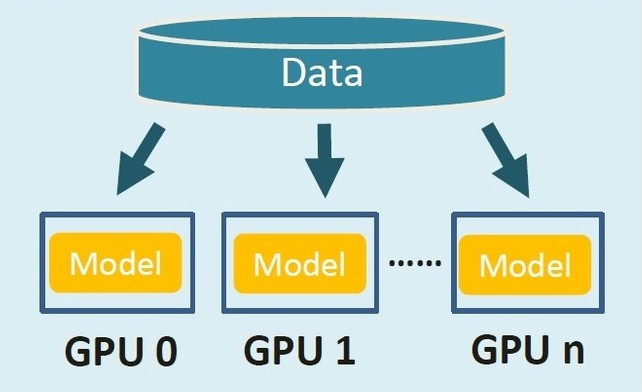原理
卷积的工作:
BN的工作:
把卷积带入BN:
融合后的新卷积:
代码
1
2
3
4
5
6
7
8
9
10
11
12
13
14
15
16
17
18
19
20
21
22
23
24
25
26
27
28
29
30
31
32
33
34
35
36
37
38
39
40
41
42
43
44
45
46
47
48
49
50
51
52
53
54
55
56
57
58
59
60
61
62
63
64
65
66
67
68
69
70
71
72
73
74
75
76
77
78
79
80
81
82
83
84
85
86
87
88
89
90
91
92
93
94
95
96
97
98
99
100
101
102
103
104
105
106
107
108
109
110
111
112
113
| import torch
from torch import cuda
import torch.nn as nn
from time import time
from copy import deepcopy
torch.manual_seed(1)
torch.cuda.manual_seed(1)
class DummyModule(nn.Module):
def __init__(self):
super(DummyModule, self).__init__()
def forward(self, x):
return x
def fuse(conv, bn):
w = conv.weight
mean = bn.running_mean
var_sqrt = torch.sqrt(bn.running_var + bn.eps)
beta = bn.weight
gamma = bn.bias
if conv.bias is not None:
b = conv.bias
else:
b = mean.new_zeros(mean.shape)
w = w * (beta / var_sqrt).reshape([conv.out_channels, 1, 1, 1])
b = (b - mean)/var_sqrt * beta + gamma
fused_conv = nn.Conv2d(
conv.in_channels,
conv.out_channels,
conv.kernel_size,
conv.stride,
conv.padding,
conv.dilation,
conv.groups,
bias=True,
padding_mode=conv.padding_mode
)
fused_conv.weight = nn.Parameter(w)
fused_conv.bias = nn.Parameter(b)
return fused_conv
def fuse_module(m):
children = list(m.named_children())
conv = None
conv_name = None
for name, child in children:
if isinstance(child, nn.BatchNorm2d) and conv:
bc = fuse(conv, child)
m._modules[conv_name] = bc
m._modules[name] = DummyModule()
conv = None
elif isinstance(child, nn.Conv2d):
conv = child
conv_name = name
else:
fuse_module(child)
def validate(net, cuda=torch.cuda.is_available()):
net.eval()
fused_net = deepcopy(net)
fused_net.eval()
fuse_module(fused_net)
error = 0
origin_time = 0
fused_time = 0
if cuda:
net.cuda()
fused_net.cuda()
n = 1
with torch.no_grad():
for _ in range(n):
x = torch.randn(size=(32, 3, 224, 224))
if cuda:
x = x.cuda()
torch.cuda.synchronize()
start = time()
out_origin = net(x)
torch.cuda.synchronize()
end = time()
origin_time += end - start
torch.cuda.synchronize()
start = time()
out_fused = fused_net(x)
torch.cuda.synchronize()
end = time()
fused_time += end - start
error += (out_origin - out_fused).abs().max().item()
print(f"origin time: {origin_time / n}s fused time: {fused_time / n}s error:{error / n}")
if __name__ == '__main__':
import torchvision
net = torchvision.models.mobilenet_v2(True)
net.eval()
validate(net, cuda=False)
|
测试
这个融合优化属于经济上净赚的事情,精度理论上无损(实际上有损,但是很小),速度有20%-30%的提升,尤其是BN层特别多的情况。
以下为在CPU上测速的情况:
| ResNet | Before | After |
|---|
| ResNet18 | 0.088 | 0.076 |
| ResNet34 | 0.157 | 0.124 |
| ResNet50 | 0.275 | 0.185 |
| ResNet152 | 0.728 | 0.406 |
引用
PyTorch 卷积与BatchNorm的融合 - 知乎 (zhihu.com)

